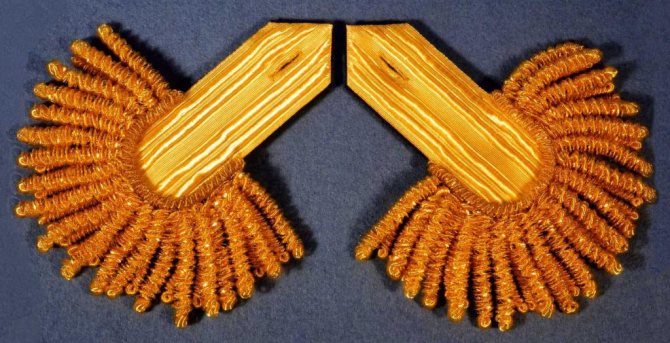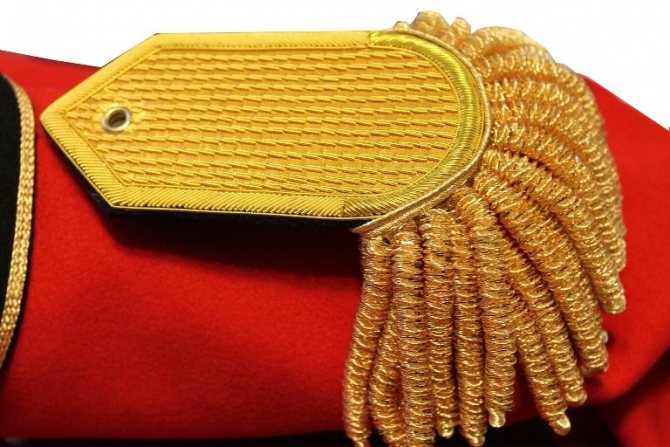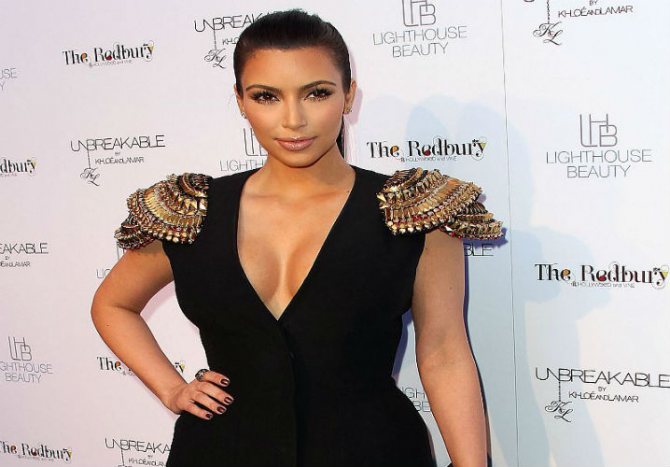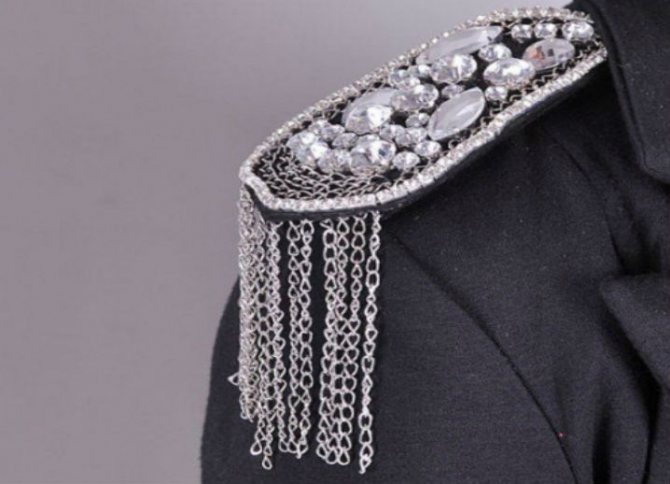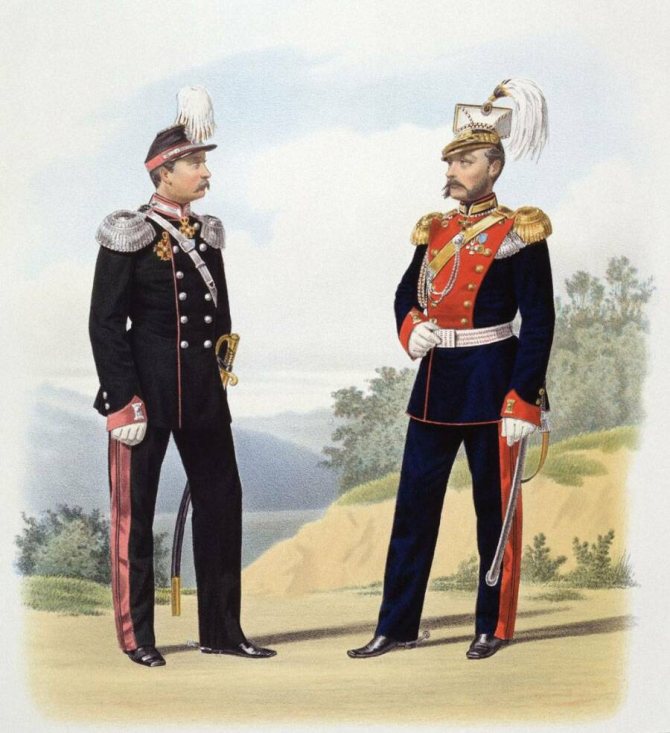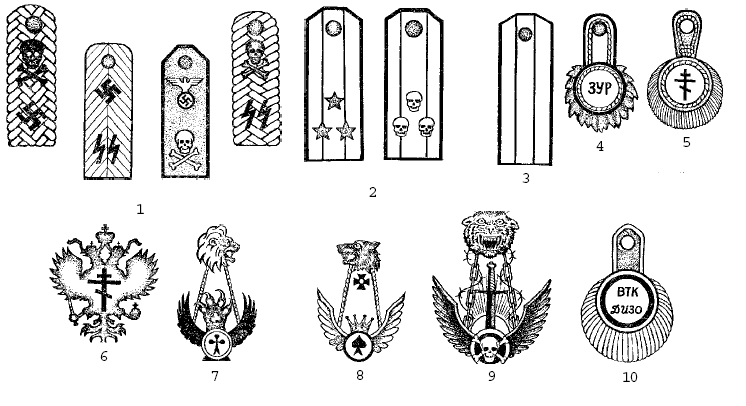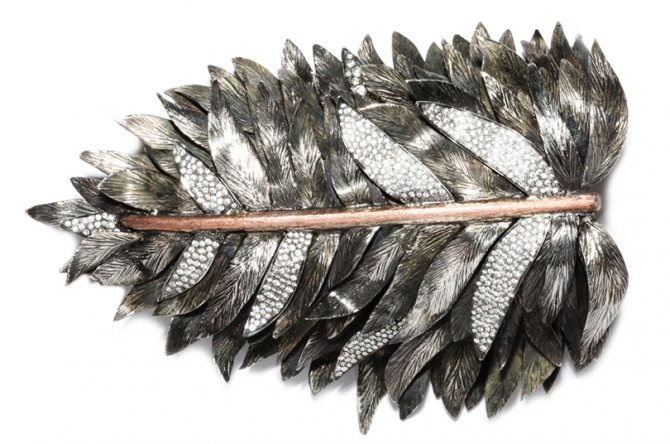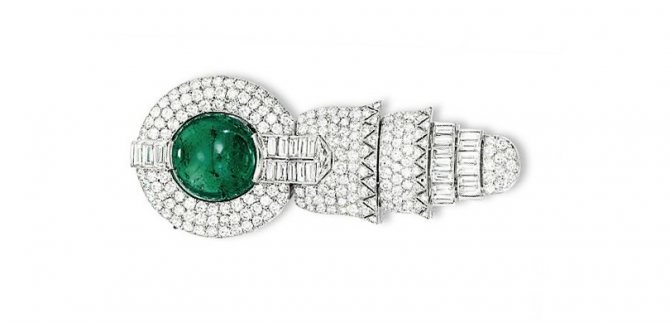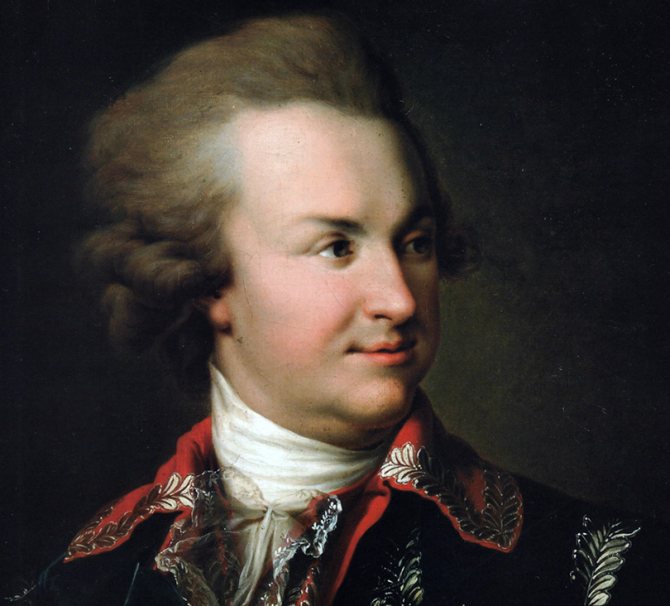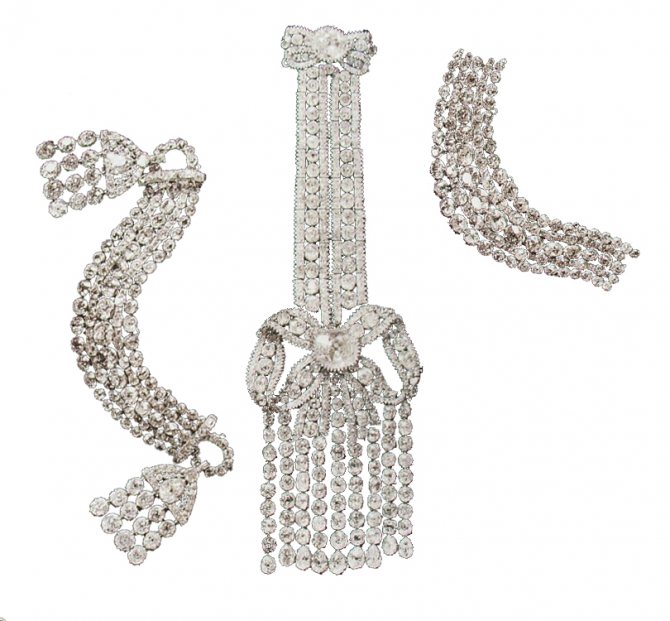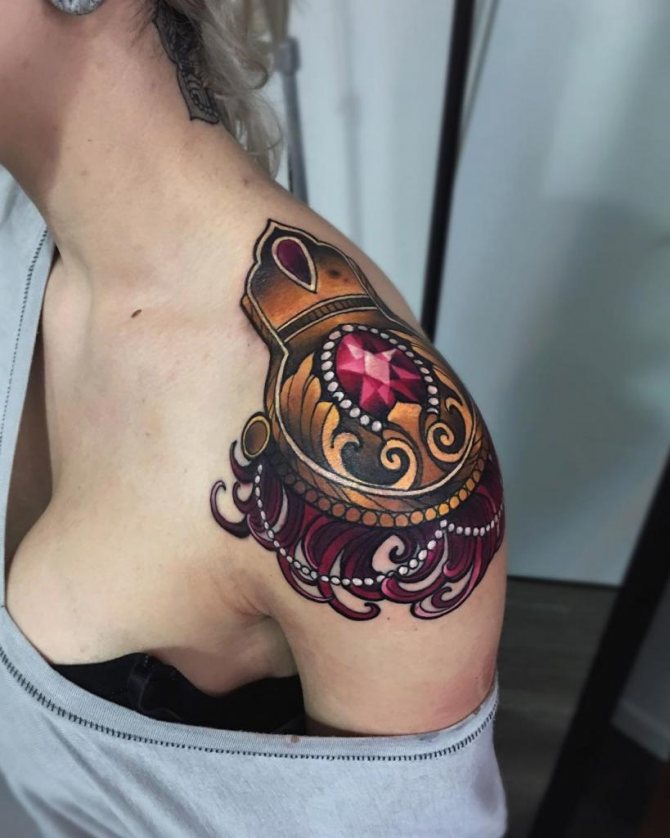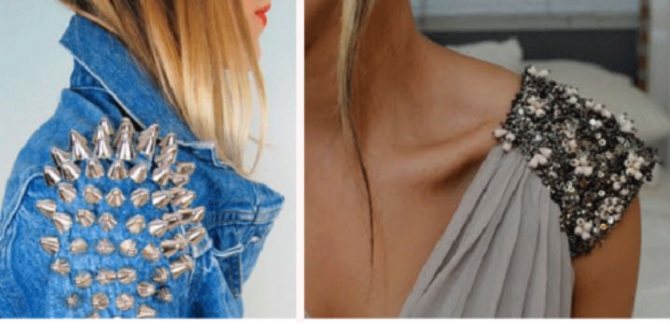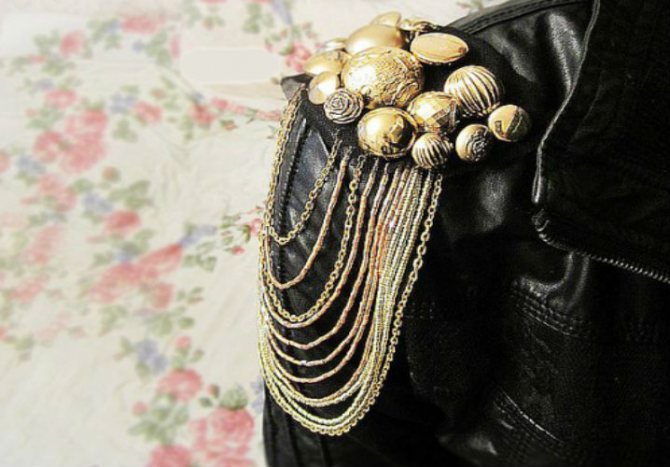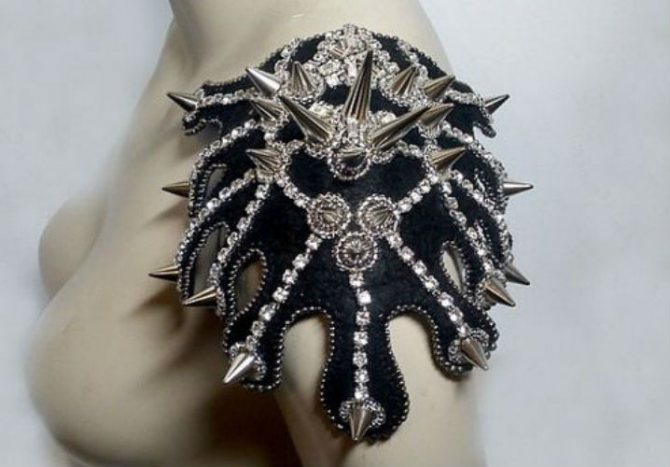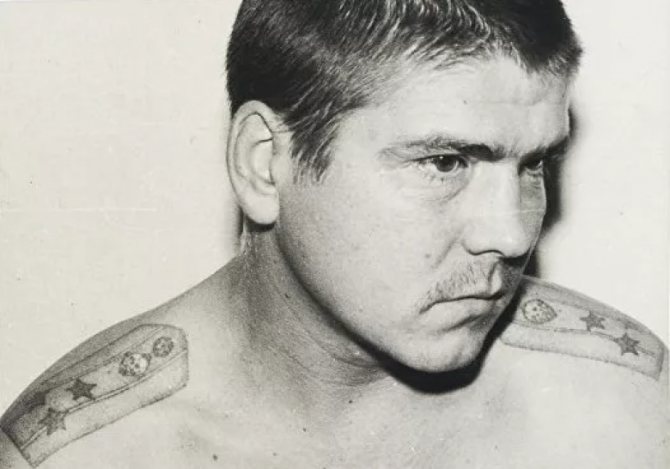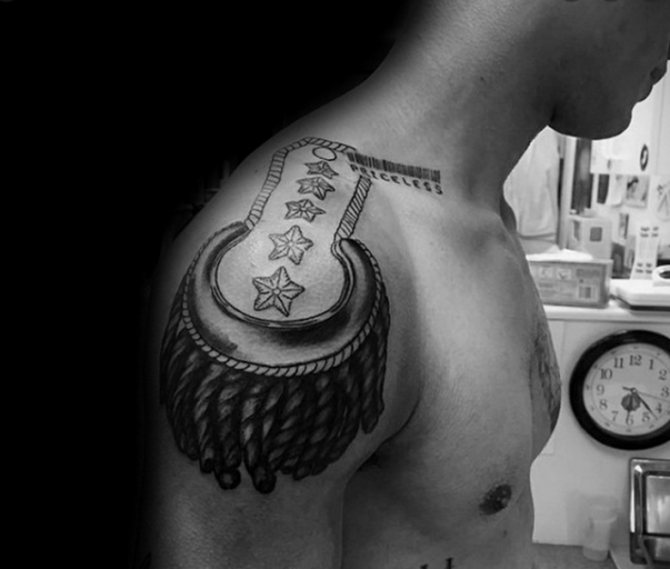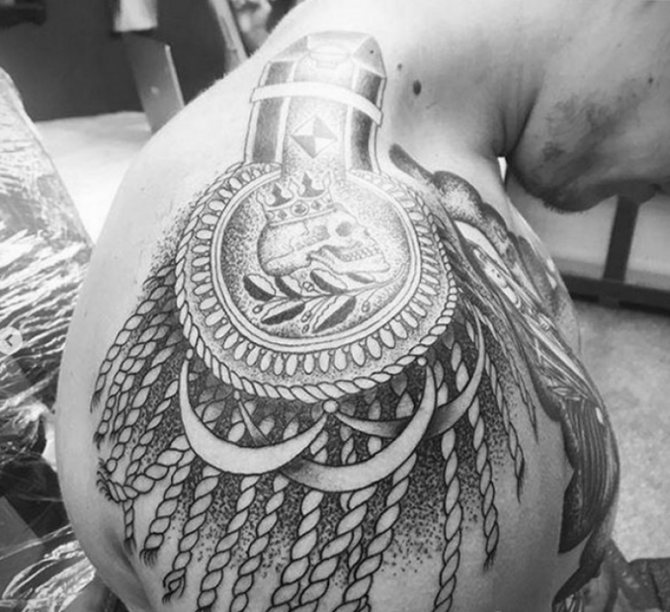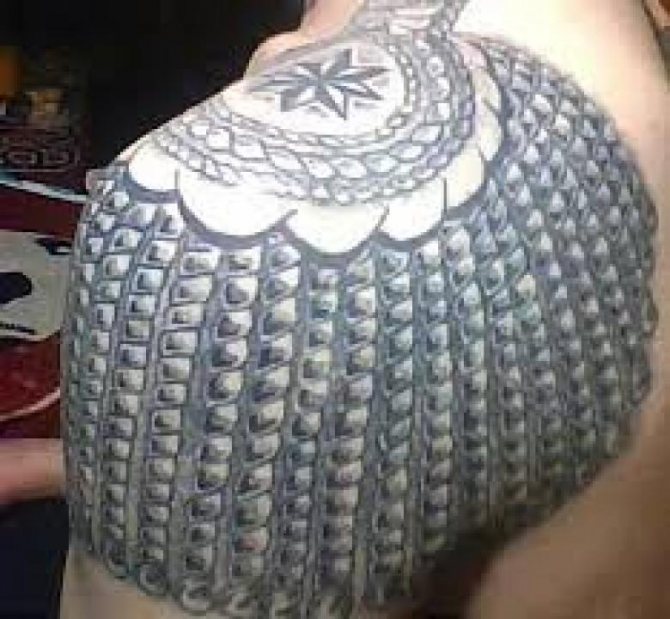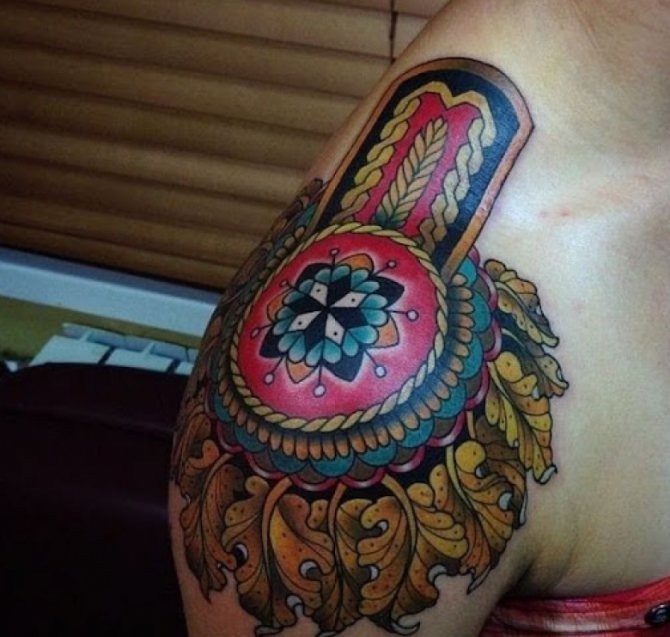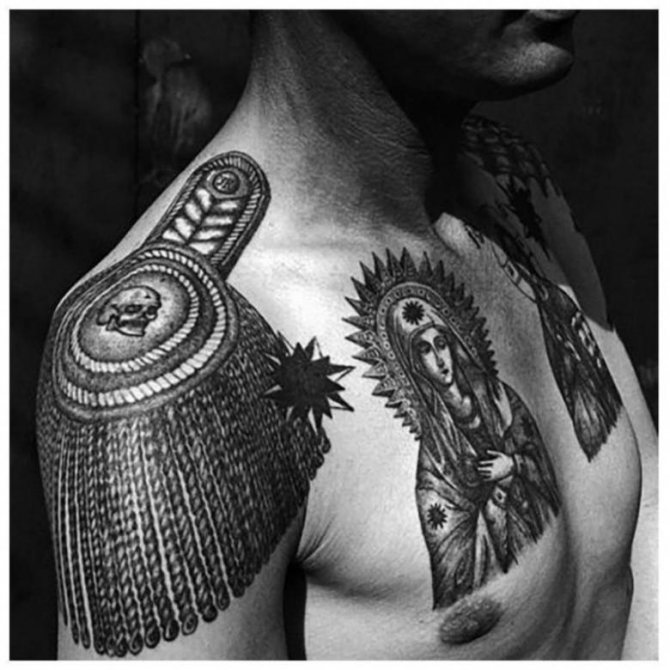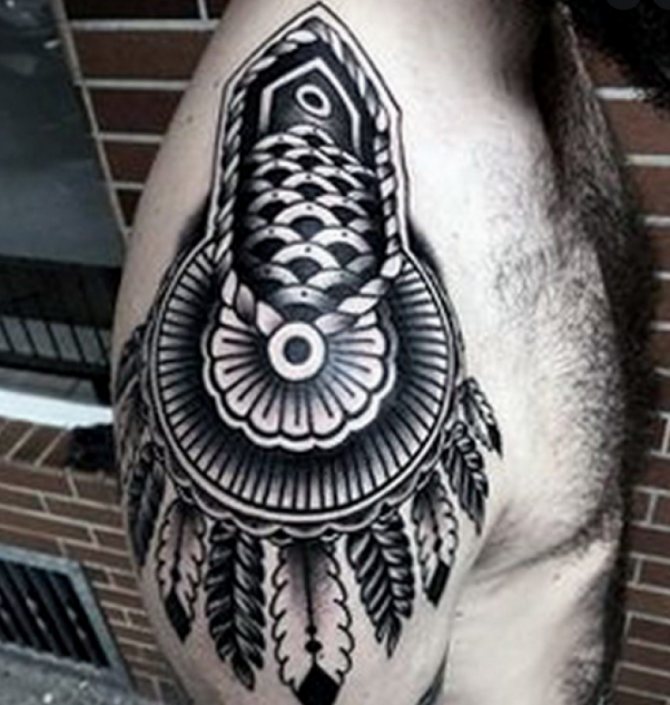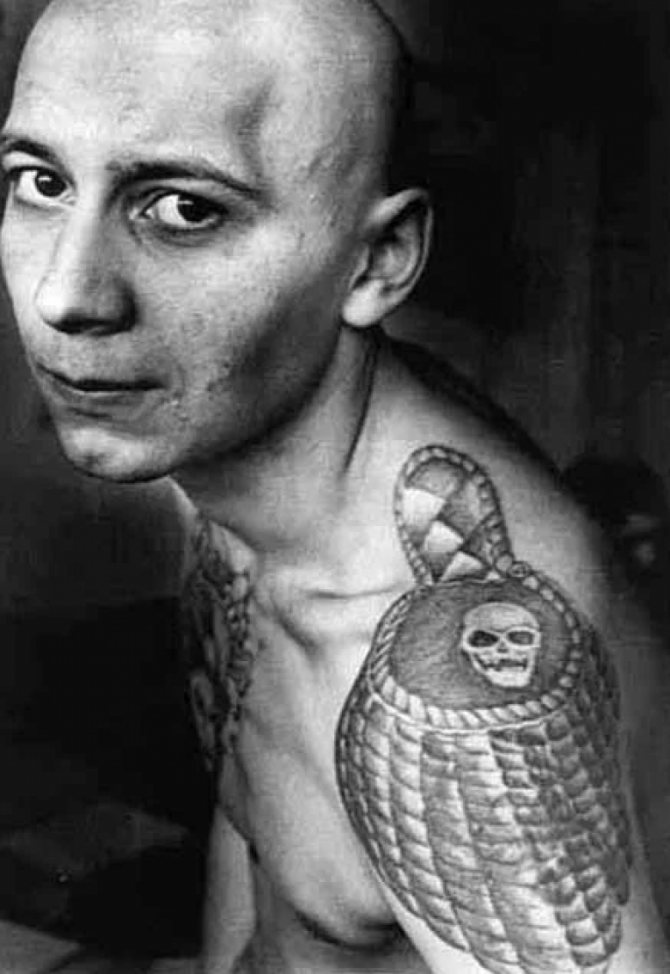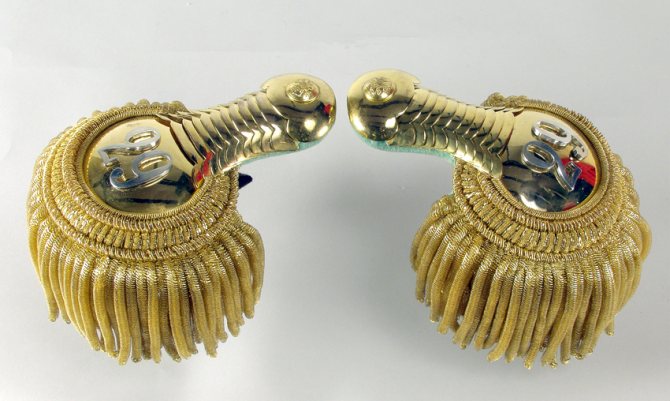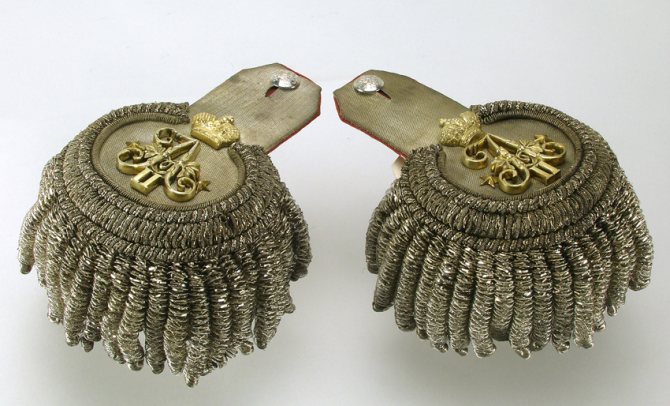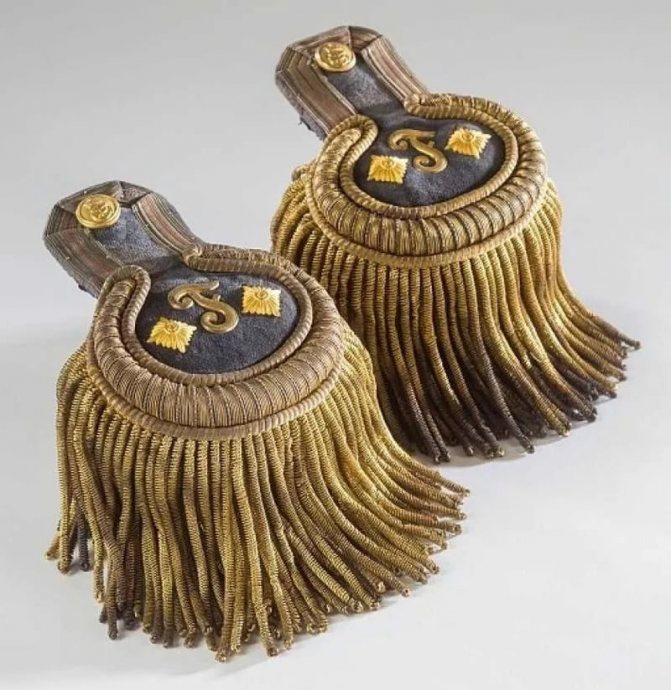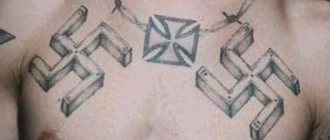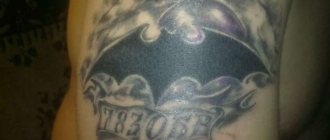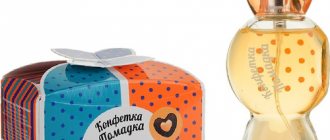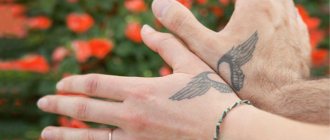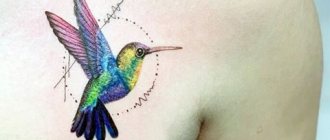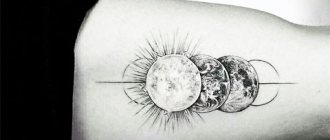What is an epaulettes
The word "epaulettes" was first used in historical documents at the end of the 18th century. It comes from the French "épaulettes," which in Russian is translated as "shoulder pads." Initially this accessory was part of the knight's armor, made of metal and used to protect the shoulders. With the invention of firearms, metal armor became useless, and epaulettes began to perform only a decorative function.
This accessory was a rectangle decorated with an ornament, rounded on one side and trimmed with fringe. Epaulettes were fastened on the shoulder of the uniform with buttons, laces, hooks or belts. The different patterns, shape and length of the fringe corresponded to certain military ranks, as modern epaulets had not yet been invented at that time.
"The radiance of luxurious epaulettes..."
| The word and concept of epaulettes is firmly fixed in the minds of many as an item of military uniform. Indeed, as part of the costume (male), epaulettes reached widespread use specifically in the army, but they served the function of decoration. |
Uniform of a captain of the first rank of His Imperial Majesty's retinue. Russia. Second half of the 19th century. XIX century. Braided Cord, bobbin. The Central Naval Museum, St. Petersburg. The presence of an axelbant and a monogram of the Sovereign (АII) shows that it belongs to the suite. Epaulettes with a silver suite.
It should be noted at once that epaulettes were originally a purely European innovation. The exact date of introduction of this item is almost impossible to establish. One thing is clear - epaulettes were an inseparable part of men's uniform. Both for military and civilian purposes.
Some researchers associate the appearance of epaulettes with the times of knights, when shoulder straps began to appear as part of the armor of both mounted and foot soldiers. This was due to the natural need of warriors to protect shoulders from blows - direct and tangential - of various types of cutting and striking weapons. The logic of these specialists is clear. Armor in one form or another survived in the armies of the world until the beginning of the 20th century.
Other historians of military uniforms suggest that initially the appearance of epaulettes was caused by the need to fix on the shoulder portuettes, scarves, bandages. That is, the epaulet began its "life" as a flap, epaulettes.
Today it is established that epaulets appeared in our army under Peter I (1672-1725) at the moment when the reformer- sovereign changed irregular army for the permanent one.
In the period from 1683 to 1699 in the Russian army a military uniform with a flap-collar was introduced. The function of this innovation was simple - to hold on the shoulder the strap of grenade (grenade) bag. On the engravings and portraits from the early 18th century the cloth flaps stitched into the shoulder joint and the sleeves of the uniform on one side and fastened on the button on the other, at the collar, are clearly visible. As it turns out, epaulettes and epaulettes existed at that time, but played completely different roles. There was no question of any insignia yet. The main difference between the troops and large military units was in the colors of fabrics used for uniforms. Yet today we are going to talk about the epaulettes and their history - somewhat unexpected for us.
The word itself unpretentious comes from the French yraclett (< yracle - shoulder) and is translated as "shoulder padding". Formed definitively by the middle of the eighteenth century, it was an oblong plate of cloth, lace or metal. Its shape and fastening resembled epaulettes known to us epaulettes. One end was fixed to the shoulder, the other end with some kind of fastener (usually - a button) was fixed at the stand-up collar in the fashion of those days. At that time epaulettes were worn only on one shoulder, usually on the right one. Only men were allowed to use epaulettes in their suits, as they had the duty and the right to wear military dress.
J. Dow. Portrait of Emperor Alexander I (fragment). 1826. X., m. 87,9 х 60,0. Cottage, Peterhof. The tsar is shown in the uniform of Her Majesty Empress Maria Feodorovna's Cavalry Guard Regiment.
Thus, the fate and the very nature of the epaulet were decided at the moment when it became established on Russian soil. In 1722 Peter the Great predetermined the spirit of the empire - a militarized state with universal (for the male population) conscription - for two centuries ahead with the "Table of Ranks. The "time table" existed with changes until 1917. According to this document, regardless of service, a man was obliged to wear a military uniform. Insignia (note for now, not differences, namely distinctions) began to gradually fill out the uniform. Beginning with sewing on the collar, sides, falsets, sleeves, and ending with awards and badges. Among them was the epaulet.
It continued to perform the utilitarian function of the epaulet - fastened on the shoulder harnesses, scarves, belts, and ribbons of the order. V.M. Glinka in his book "Russian Military Costume of XVIII-early XX Centuries" says: "Since 1730. some regiments of the army received the right to wear peculiar epaulettes or, as they were defined, "a woven braid with tassels" on one shoulder with the character of insignia given to them. Each regiment had epaulettes of a type assigned only to it, different from the epaulettes of other regiments.
Later epaulettes began to be richly decorated by people with wealth. The first mention of epaulettes as a costume decoration was during the reign of Empress Elizabeth (1709-1761/62). The illustrious favorite and morganatic spouse of the Empress A. Razumovsky (1709-1771) appeared at court with a diamond epaulette on his shoulder. It should be noted that the German dress was instilled in Russia in a peculiar way. They were not quite accustomed to wearing it, so they often used it in their own way, blindly copying Western designs.
The epaulet also "dropped" and turned from a military accessory into a kind of ornament, which was flaunted, boasted and bragged about. Others - those who did not have the privilege of wearing this accessory - envied the lucky one. Owners of epaulettes, with a typical Russian aristocracy craving for pomp and pageantry, immediately embarked on a competition "whose epaulet is better". So, originally epaulet in Russian is a decoration.
The wife of Field-Marshal Rumyantsev (1725-1796) mentioned in her letter to her husband a blue jasper epaulet with yellow diamonds, which was presented to Panin (1718-1783) by the Elector of Saxony in 1768 for his wedding. In the beginning of 1779 she reported about a diamond epaulet granted to the Ambassador to Tsargrad together with the Order of St. Andrew.
The uniform of a captain of the first rank of His Imperial Majesty's retinue. Russia. Second half of the 19th century. XIX century. Braided cord, bobbin. The Central Naval Museum, St. Petersburg. The presence of an axelbant and a monogram of the sovereign (АII) speaks of belonging to the retinue. Epaulettes with a silver set.
Emperor Catherine's epaulettes Prince G.A. Potemkin (1739-1791) also possessed some phenomenal epaulettes, with diamonds of incredible size. There is a legend connected with them, according to which, after Potemkin's death these wonderful epaulettes were returned to the treasury. In 1793, for the wedding of the Grand Duke Alexander Pavlovich (1777-1725), the future Emperor Alexander I, Catherine II (1729-1796) ordered "a necklace of seven solitaire diamonds, taken from Potemkin's famous epaulettes, to be made for his wife, Elizabeth Alexeyevna (1779-1826).
In the same year, according to the recollections of Nikolai Brusilov (1782-1849), Alexander Suvorov (1730-1800), then still a young man, appeared at a dinner with Catherine II wearing a diamond epaulet, which seemed especially chic to a feathering page.
So throughout the 18th century, precious epaulettes were mostly decorative accessories rather than having any functional significance. This once again, by the way, confirms the peculiarity of Russian culture in general-importing something and reinterpreting it in its own way. It is enough to remember our traditional matryoshka (has Chinese roots) or vodka (Polish origin)...
I. M. Dolgorukov (1764-1823) recalled how once he "sang the part of Don Carlos in a costume with a sumptuous epaulette, which the Grand Duchess Maria Feodorovna (1759-1828) gave him for the exit. In the course of the performance the string holding the pearls of the epaulet had burst imperceptibly and the precious pearls scattered all over the stage. Maria Feodorovna fell into a hysterical state.
In 1800, while celebrating in Moscow a treaty with Turkey, Emperor Paul I (1754-1801) was dressed in a uniform with a diamond epaulette, a luxurious ornament unfit for sovereign austerity.
Alexander I, wishing to distinguish N.B. Yusupov (1751-1831), incidentally one of the leading collectors of Russia at that time, who had all the awards of the Russian Empire, presented his favorite with a pearl epaulet.
Recalling the early 19th century, Bulgarin (1789-1859) specially stipulated: "Epaulets were not in the Russian army at all, and we alone wore them. Let us explain that the future editor of The Northern Bee served in the Guards Lancer Regiment, which enjoyed special privileges and, accordingly, some connivance on the part of the august personalities.
But the year 1807 came. The reorganization in the uniform of the army and navy began. At that time epaulettes appeared as insignia for all the general and officer staff. They were supplemented with luxurious embroidery, splendid scarves and braids made of pozument (from so. Pasament - a braid made of silk or wool with a metallic ducktail) and gimpy axelbands, but these military accessories require a more detailed discussion.
Epaulettes of the General of Cavalry. 1884. Russia. Gilded brass, cloth. They came from the State Institute of the Defense Ministry in 1954.
Gold or silver epaulettes were worn by generals and officers of the Guard. Epaulettes of generals more than others were decorated with a large fringe of gold or silver knots. Sometimes the thickness of the fringes was such that the term "fat epaulettes" even appeared.
Since 1885 epaulettes belonged only to ceremonial uniform, and in 1914 they were abolished because of their high cost and a certain uselessness. Epaulettes were introduced everywhere and lasted in the army until today.
Like any jewel, the epaulettes of the tsarist army did not come cheap. Polina Geble (1800-1876), the wife of the Decembrist Ivan Antonenkov (1802-1877), described how her future husband, suffering the lack of white bread in a prison cell of the Peter and Paul Fortress, undid his silver epaulets, sold them and used the proceeds to make provisions.
In the history of the tsarist family, epaulettes once played a salutary role. Alexander II's (1818-1881) favorite brother, Grand Duke Konstantin Nikolaevich (1827-1892), was appointed governor of Poland in 1862.
One day he went to the opera, and when, after the second act, he came out and sat in his carriage, a man separated from the crowd of onlookers and practically shot the Grand Duke at point-blank range. Konstantin Nikolaevich was unharmed by chance - the bullet was lodged in the very "fat" epaulet. There were cases when epaulettes saved people from death in a duel... After the revolution it was different.
At the beginning of the section "Textiles" >>>
Epaulettes as part of the military uniform
In the 19th century epaulettes were worn by British and French officers to indicate rank, and then they began to be used in the armies of other countries: the United States, Canada, Germany, Sweden, Russia. An officer's rank could be determined by which shoulder he wore the epaulettes: on the right, left or both. Later, those soldiers who wore only one epaulettes were required to wear a second one on the opposite shoulder, but without the fringe.
The epaulettes for officers were made of gold and silver, while for sergeants and enlisted men cloth of different colors was used.
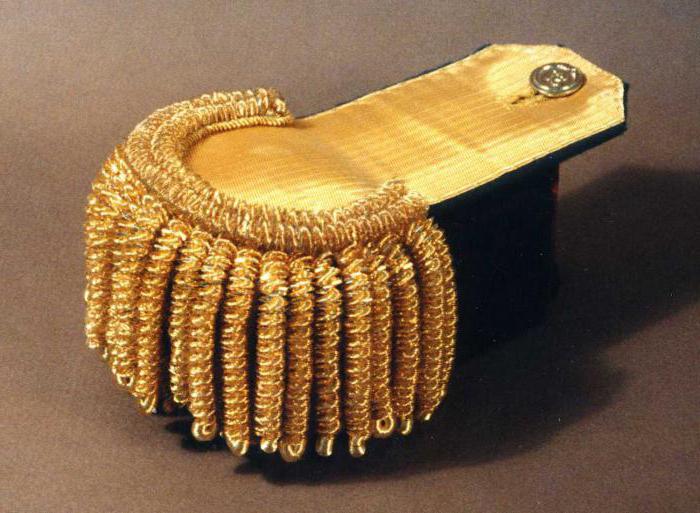
The brightly colored shoulder pads were visible from a distance and allowed soldiers to identify their commanders in the heat of battle. Some troops wore one epaulettes only on the right shoulder, others only on the left, and still others on both shoulders.
The British military discovered that this sign helped not only its soldiers discern officers, but also enemy snipers. When it became apparent that enemy shooters were targeting officers because their epaulets were an easy target, the British military removed them from their uniforms and replaced them with a safer option: epaulets. The U.S. military soon did the same.
Currently, decorative epaulettes are used as part of ceremonial military uniforms in some countries.
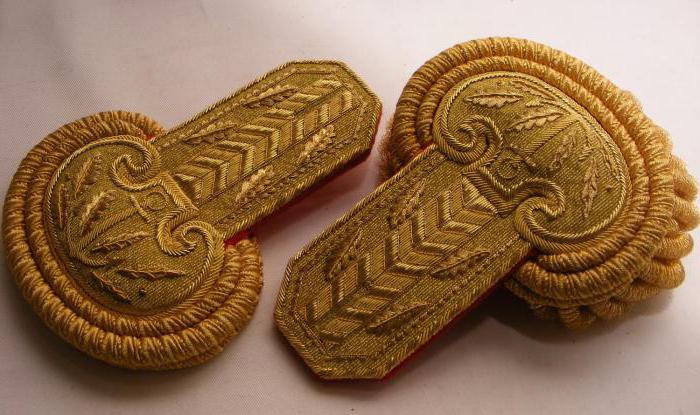

Magical meaning of epaulettes tattoo


The figure is capable of causing aggression and even conflicts with law enforcement agencies in its owner.
Many practitioners do not recommend stuffing the image of epaulettes, because long-term use in the prison world has imposed a negative energy imprint. The belief in a certain meaning of the epaulettes tattoo has modified the meaning, and therefore such a sketch can make a person unnecessarily aggressive, provoke illegal actions and conflicts with law enforcement agencies. Given that such a tattoo is obtained only by criminals sitting in a maximum security prison and violating the schedule, it is even possible to get into a criminal company. It is especially not recommended to stuff the image of a epaulet on the left shoulder to people who are easily influenced.
The tattoo is equally suitable for both sexes, and also has no preference for the zodiac signs.
In addition to the prison negative meaning, the epaulet also means the pronounced qualities of a born leader and great willpower. The bearer of the tattoo becomes more ambitious, copes with complexes and fears, and even more quickly deserves authority among subordinates. The epaulettes tattoo will be useful to people who hold senior positions or aspire to them.
Epaulettes in Russia
In Russia, this element of military uniform appeared around the end of the 17th century. At first it looked like a loop of cloth or leather, fixed on the shoulder, and served as a limiter for the belt pouch: held it from slipping down. Such "epaulettes" were part of the enlisted men's uniform, because officers did not carry rifles and they had no need for the ammunition pouches.
Insignia and decorations were completely absent. In the first half of the 19th century, epaulettes began to have an ornamentation that corresponded to certain military ranks.
The last stage of finishing
Epaulettes by hand for a hussar are sewn both on a sewing machine, and by hand in its absence. A mandatory element of these products is considered a fringe. It is necessary to trim not the entire epaulet, but only its edge. If you made a base with a rounded edge, hem the fringe only around this part of the piece.
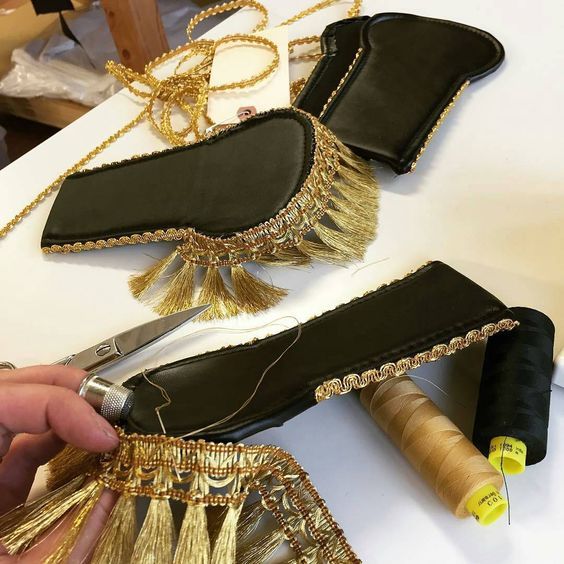

You can buy fringe in a sewing accessories store, matching it with the color of the piping and the button. To make the beginning and the end clearly coincide on the two products, before sewing be sure to make a fitting on the child's shoulder and mark the right points with a marker or crayon. Thread is desirable to choose the same shade, so it was not visible seams. Fringe is suitable for any, from twisted silk strings or tassels of thread, as in the sample above.
How to sew epaulettes with your own hands (the master class is given in the article), you already know, so you can easily cope with the task. Sew them on the uniform after fitting in such a way that the fringe hangs freely from the child's shoulders. Strengthen it in two places along the seam of the jacket - at the neck and on the very shoulder - with hinted stitches. It will be beautiful to look epaulettes of the same color with pants or tassels. Have a nice start!
How epaulettes differ from epaulettes
In the middle of 19th century silver and gold epaulettes began to be replaced by epaulettes in nearly all armies of Europe and America. Although these two elements of army attire are similar to each other, there are several differences between them.
Shoulder straps are made in the form of a rectangle and are usually made of cloth or of a solid cloth covered base. On the top side are sewn insignia: stripes, stars. An epaulet is a rectangle rounded on one side. A fringe is attached along the entire perimeter or only along the edge of the epaulettes, which serves as an identifier of the military rank. There is no fringe on the epaulettes.
Epaulettes in women's clothing
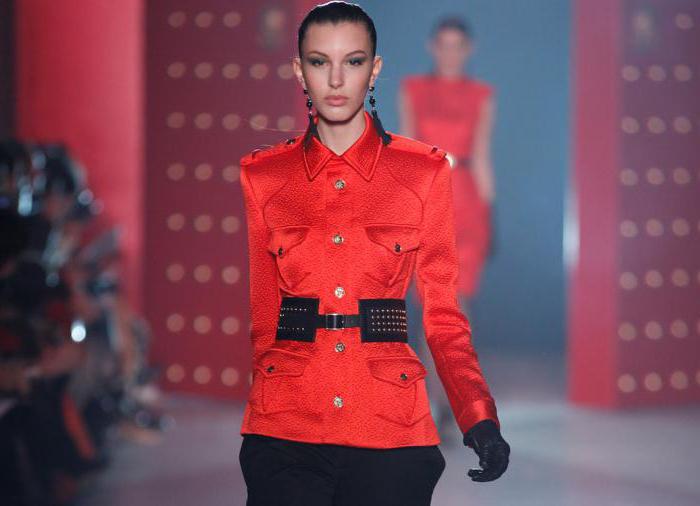

For more than two hundred years, epaulettes have served as a fashion accessory for women's attire. When a country is at war, men wear uniforms and go to the front, while women stay home. At such times, ladies often use elements of army uniform design to create dresses and other items of clothing. Details such as gold trim or large brass buttons help to recreate the military style, and women wear officers' epaulets for the same reason - to give their outfits a fashionable military feel. Even famous designers use this element in their collections. Epaulettes are a way to make a woman's silhouette clearer, tighter and sterner, to give it strength and even some authority.
Today epaulettes have only a decorative function, but once played an important role in the lives of men who went to war, and those who were under their command. The luxurious gold fringe served as a badge of honor, demonstrated the high status of the owner and was an object of admiration for both military and civilian. Many armed forces still use epaulettes during holiday parades, and women gladly decorate fashionable dresses with them.
